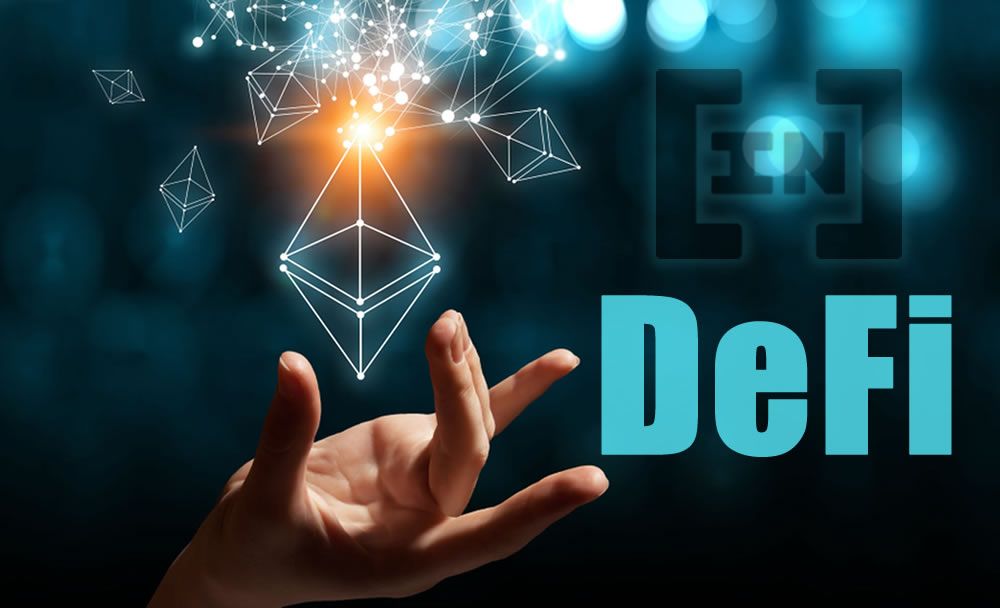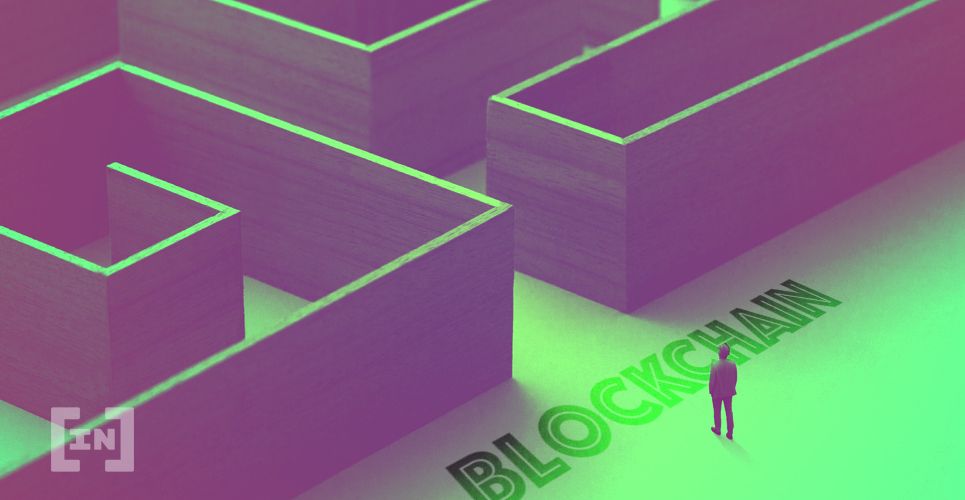BeInCrypto recently met with Mik Mironov, a partner at SMC.Capital. We discussed the future of fundraising through institutional investors and IEOs, as well as emerging trends in the DeFi sector.
BeInCrypto: With ICO funding on the decline and most IEO tokens being in the red, do you see any future for token sales?
Mik Mironov: That’s a very good question, especially for my background as a former employee of ICORating, which was one of the largest research powerhouses for crypto startups at the height of the ICO market in 2017. Back then, this information was much needed by crypto investors and the crypto community.
With ICORating you could filter a lot of information out and read about ICOs in an unbiased manner. Somebody needs to do this research, so you can feel more confident when investing in startups.

Investors didn’t really care if there was a proper use case for the blockchain technology that was at hand. Nobody asked this question. They just bought into lots of projects in order to see how they turn out once the tokens got traded on public exchanges. Those people actually made a lot of money — until the market started collapsing.
Then we saw Bitcoin go down to $3,000 and there were no ICOs anymore. Then, we saw the emergence of Initial Exchange Offerings. The first exchange that really promoted this was, of course, Binance with the IEO of BitTorrent. However, Binance was not the first exchange to organize IEOs.
The idea behind this is that the exchange takes over the responsibility of due diligence. They pre-screen different projects and give their users the opportunity to buy into only the best ones.
So once again, there was a lot of hype and some exchanges even had to conduct lotteries to decide who was able to get in and we know how it ended up. Some people in China and other countries even bought multiple computers in order to be able to create more exchange accounts, just to get into the lottery, get into the IEO, and then sell the tokens as soon as the price went up.
If you look at how IEO tokens performed after the token sale, most of them are in the red now, having lost most of their value maybe five or ten days after their listing. But if you look at some of the first IEOs, their prices are actually still going up.
What we also know from the industry is that IEOs are not a tool for fundraising — they are a marketing tool. Here, the exchange provides a platform for the projects to raise money, but in return, they must allocate a portion of their funds for market-making, in order to keep the prices stable and provide returns for their investors.
This really worked like a Swiss clock, until some of the smaller exchanges wanted their share of the IEO market. So those exchanges without any substantial community offered to conduct IEOs for only a small fee, so lots of projects flocked to them without any real expectations. This really devalued IEOs, since anyone can do them now and more and more scammy projects have started doing IEOs.
Recently, the Chinese government intervened with this, since they did not want a repetition of 2017 when people started complaining about their ICO losses. It issued a warrant declaring all IEOs a scam, so the IEOs stopped. Only now, they are coming up again.
So coming back to your question: I don’t think that IEOs are dead and I don’t think that they are bad per se. Crowdfunding is still alive and kicking in most major economies, so this method of fundraising should be available to investors. However, we think that there need to be fair practices and the industry must set proper rules to ensure that there aren’t any crazy pump-and-dumps like we have seen before in so many IEOs.
We definitely need this fundraising method, and I hope that this will continue and exchanges will provide fair treatment to projects, to ensure that only the best projects will get the opportunity to raise funds in this way.
Sponsored SponsoredBeInCrypto: What else can projects do to avoid a big sell-off after a token sale?
Mik Mironov: There are several things. First of all, they need to work with a good market maker, who algorithmically understands the dynamics of exchanges and IEOs and has proper funding, in order to support the market price of the tokens.
So market-making and having a good relationship with the exchange are very important. However, the most important thing I think is to work closely with your own community and make sure that you are constantly delivering on your product. This should also be disseminated in major media, to show your community that you are actively developing and that you are working on something good.
Always keep your community excited about your project and keep your community growing. Make your own community an evangelist for your product and for your token. Cosmos and Chainlink are some examples of this that we are seeing at the moment. Their tokens are going up for a very good reason since they are constantly working on their product.
BeInCrypto: Besides token sales, there are some other options for distributing tokens, such as airdrops and bounties. Do you think that any of these can provide a better model for distribution?
Mik Mironov: Right now, airdrops have become somewhat of a norm in the industry. Whenever you fundraise and list your token on an exchange, the exchange wants you to activate their community. This can be done through airdrops or trading competitions. This is fine.
However, it’s a well-researched fact that people who receive tokens in an airdrop usually sell the tokens at the first opportunity and this results in the collapse of your token price. So I feel that airdrops should only be used as a community reward for a certain service, like bounties for example.
SponsoredYou can activate your community by rewarding them for certain tasks. At the same time, you should make it clear why your token is good and why it is valuable, so people can be more confident in holding the token for a longer time. I do not think that distributing all tokens through an airdrop to people who are not familiar with your product and are not evangelists for your product will yield any good results though, as they will just sell the tokens.
We do feel that dual raises through both equities and tokens can incentivize your equity holders by giving them tokens on top of that, with long lock-up periods. From a VC perspective, it makes a lot of sense to get people exposed to both equity and tokens, as this gives equity holders an incentive to promote your product. We believe that this type of airdrop, if you can call it that, makes a lot of sense, as it provides more value to institutional investors.
BeInCrypto: Where do you see VC firms in the equation of fundraising? Will they take over the funding for blockchain projects when ICOs and IEOs are on the decline?
Mik Mironov: Well, VCs and Angel Investors have always been the cornerstone of any fundraising. It’s true that in 2017, projects were able to fundraise without their help. However, what we see at the moment, considering that ICOs are dead and IEOs are still possible, the majority of funding in IEOs comes from private rounds.
Only a small amount of the needed funding is actually allocated to the IEO. The exchanges can typically only sell a small portion of your token pool, while all the rest is backed by institutional investors. My advice is, if you want to raise funds, you should consider doing so by selling both equities and tokens. The trend at the moment is that institutional investors still prefer equity and want to see a clear exit strategy.
IEOs are definitely a good add-on to fundraising since they guarantee that your token gets listed on a major exchange. So in order to raise funds, consider approaching VCs and Angel Investors relevant to the industry and the product you are building. Learn about them, introduce yourself, and then pitch your project to them. It’s of utmost importance to get private funding from institutional investors before considering a token sale.
BeInCrypto: What exactly do you look out for when vetting projects to support?
Mik Mironov: Last year, we invested in a number of projects and our focus was Fintech and DeFi. We looked at two types of projects. One was an infrastructure that had the ability to disrupt existing industries.
Sponsored SponsoredFor example, we invested in a project called everiToken. They build infrastructure that can be used for micropayments and have now launched a pilot project with the largest volunteer organization in China.

There really needs to be an element that makes us think “Hey, this is a potential unicorn.” Then we need confidence that the founders are actually knowledgeable about fundraising and community building. We think that it is very important to both raise funds in order to continuously build your product and to be good at marketing on a budget.
When you are a startup, your budget is extremely tight, but at the same time, you need to be out there and get people interested in your brand. So you need to be creative in both marketing and fundraising. You need to be a salesperson.
BeInCrypto: Are there any specific developments in DeFi that we should look out for?
Mik Mironov: Stablecoins come to my mind. Aside from that, the trend is very clear. At the moment, people are propagating DeFi as a replacement for banking. However, there is no real underwriting so far. Every loan is done by overcollateralizing it in crypto. You lock up your ETH in a smart contract and then you get a loan. That’s not underwriting in banking terms.
Underwriting means that there is risk scoring. You get a score and by that, you can get a loan. You can collateralize the loan a little bit, but in most of the cases, the loan is unsecured. So the trend is that we are going to see the emergence of proper underwriting, and this trend has already started.
MakerDAO is one of the biggest players in the DeFi space and is on the way of becoming somewhat of a monopoly, already having a huge share in the market. We can see the total value of ETH locked in DeFi growing, but we also see a lot of amazing collaborations, like MakerDAO collaborating with Coinbase on an E-Commerce platform.
They are implementing DAI in that platform, for people to pay with it in many parts of the world, so DeFi is moving into the traditional E-Commerce space and the next movement is going into real underwriting, like insurance. for example.
BeInCrypto: Thank you for this insightful interview.






